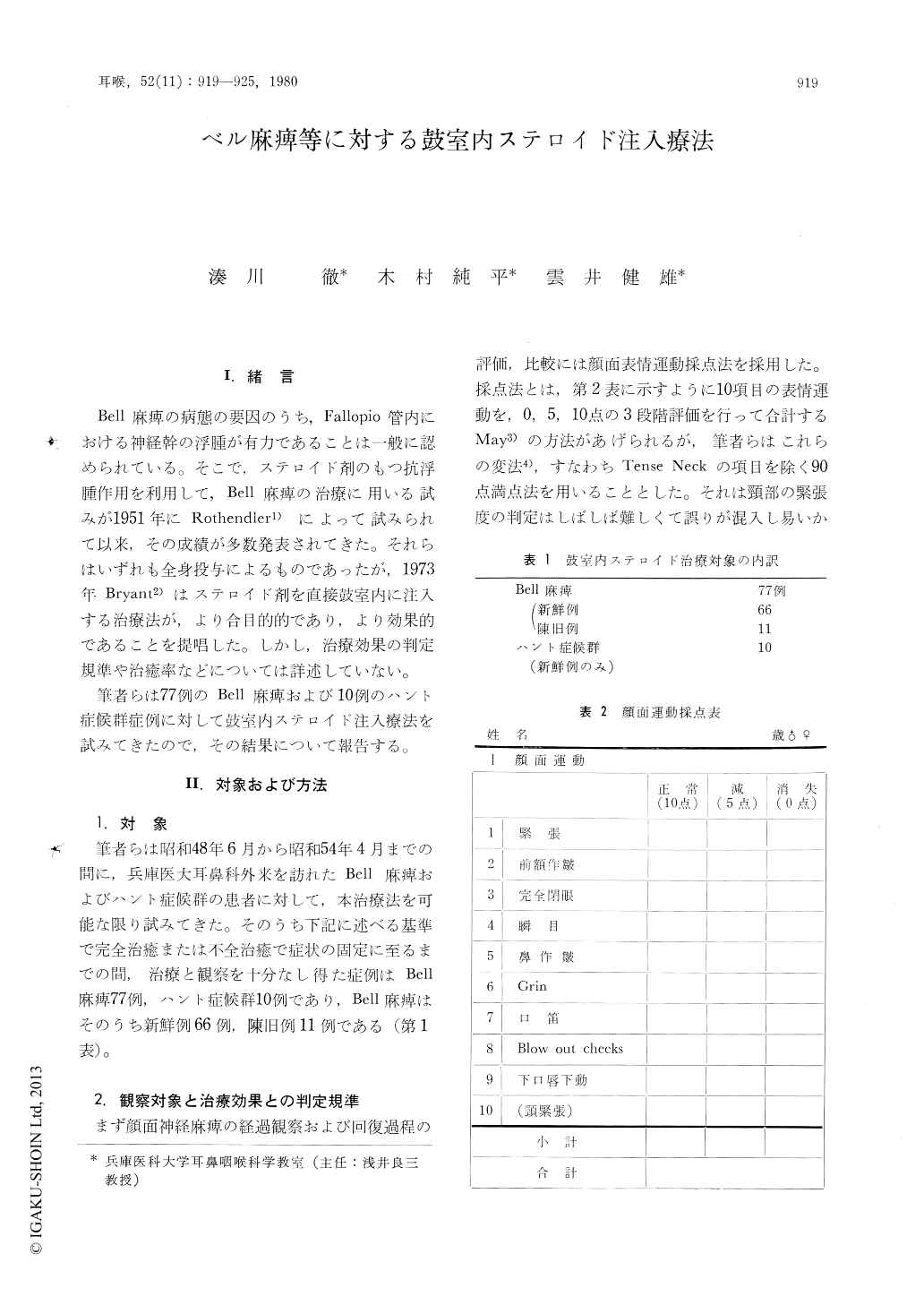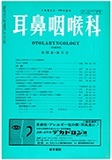Japanese
English
- 有料閲覧
- Abstract 文献概要
- 1ページ目 Look Inside
I.緒言
Bell麻痺の病態の要因のうち,Fallopio管内における神経幹の浮腫が有力であることは一般に認められている。そこで,ステロイド剤のもつ抗浮腫作用を利用して,Bell麻痺の治療に用いる試みが1951年にRothendler1)によって試みられて以来,その成績が多数発表されてきた。それらはいずれも全身投与によるものであったが,1973年Bryant2)はステロイド剤を直接鼓室内に注入する治療法が,より合目的的であり,より効果的であることを提唱した。しかし,治療効果の判定規準や治癒率などについては詳述していない。
筆者らは77例のBell麻痺および10例のハント症候群症例に対して鼓室内ステロイド注入療法を試みてきたので,その結果について報告する。
Intratympanic injection of steroid was performed in patients with idiopathic facial paralysis during a period from 1973 to 1979, and the results of this treatment were analyzed and compared with those of conventional treatment. As the standard determination of the degree of facial recovery, the pointscoring system proposed by May (1970) was adopted in this study.
In patients with incomplete paralysis treated within 2 weeks after onset, 92.6% attained full recovery by this therapy and 96.4% by conservative treatment. But in patients while with complete paralysis, 69.2% showed full recovery, while 38.2%by conservative treatment. It should be noted that the appearance of incipient remission signs and average length of treatment were considerably shortened by this treatment in patients with complete paralysis.
In cases of long standing Bell's palsy and Ramsay-Hunt syndrome, no satisfactry results were obtained.
In conclusion, intratympanic steroid therapy initiated within two weeks after onset is worthwhile and rational for treatment of Bell's palsy.

Copyright © 1980, Igaku-Shoin Ltd. All rights reserved.


